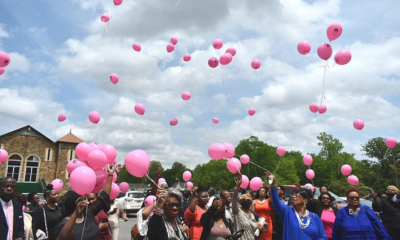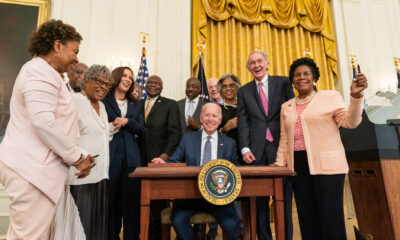Elections 2012
Don’t Get Caught Up in Debates and Polls

The third “foreign policy” debate had plenty of memorable lines, but in the end I do not believe this debate, or any of the others will prove decisive.
That is because there are really just two types of viewers watching debates.
First, and the most numerous, are partisans who already know which candidate they will support. These people watch the debates to confirm their own biases. Dems watched last night as much to hear Obama tout his accomplishments as they watched to see if Obama could land a few memorable zingers.
And, Republicans watched to see if Romney could successfully label the president as weak on foreign policy.
The second type of viewer is the undecided, fewer in number these are the “Independents.” Even with these voters, the literature argues that they will typically break one way or the other and can really be classified as “leaners.”
Ever since the first presidential debate, the one labeled a poor performance for Obama Democratic partisans have been living in angst over Barack Obama’s chances. Obama just doesn’t have the killer instinct, Chris Matthews said, and now he has let Romney back into the race.
Yet, just a few weeks ago after Romney’s 47% comment many Republicans felt the same way.
The reality is both sides are wrong because both sides are too quick to believe the media hyperventilation over every candidate misstep, miscue, or misstatement.
As it turns out the polls are regressing back to where they were prior to the first debate.
Partisans revel in the missteps, but rarely do these moments change the trajectory of the race.
What people fail to notice in the drummed-up anxiety over Obama’s weak debate performance is that the underlying fundamentals that predict election outcomes have not changed in the last week, the last month, or the last several months. These fundamentals are used by political scientists and statisticians to develop models predicting election outcomes without the aid of unpredictable polling.
This is why political scientists do not get caught up in one week of polling nor do we follow the polls results from any one single company. Time has a way of smoothing out the rough edges of polling and unmasking the biases of particular polls.
That has been the campaign reality since early spring. As long as the fundamentals do not change, a couple of bad weeks on the campaign trail for Romney are balanced out by a couple of bad weeks on the campaign trail for Obama.
Presidential forecasting models used by political scientists and statisticians like Nate Silver at the New York Times use a variety of assumptions to predict presidential elections. The good models are surprisingly accurate.
What these models tell us is that there are certain fundamentals that are more likely to affect presidential elections. Among these factors is the unemployment rate, the trend in the unemployment rate, the trend in the unemployment rate during the election year, stock market performance, demographics, change in Gross Domestic Product, the president’s approval ratings, the actual number of jobs created in a president’s term, the time the incumbent’s party has been in the White House and recent election history.
Unfortunately, most articles by pundits are written with too little attention paid to the fundamentals.
For instance, early in the campaign cycle, the Washington Post’s Chris Cillizza wrote about the “narrow” Electoral College path Mitt Romney will most likely follow in his White House pursuit. His information was based purely on public opinion polling. This is a bad approach because it neglects the fundamentals.
With an understanding of the fundamentals you can fairly well predict the probabilities of election outcomes – without conducting any polls.
As a result, most forecasters believe Obama will win 6 times out of 10, but this also means that Romney can win 4 times out of 10. No poll can provide a more accurate estimation than that because of the inherent methodological problems within any given poll.
Polls suffer from sampling error, interviewer effects, and distinguishing likely voters from registered voters is not that easy. Thus, throughout the long arc of a campaign, almost always, the net results of the polls is a regression to the mean, meaning that over time poll results will come back to the probabilities already predicted by the forecast models.
So, I watched the debates, but unless the fundamentals change, the debates will not decide the election, any more than a particularly clever commercial or speech.
In fact, political scientists have looked at this. There is very little evidence that the “bump” a candidate has received in the polls from a strong debate performance has had an impact on the actual election outcome.
Think back to August and September. Before the Republican National Convention, Romney was behind in the polls, but not so far behind that people were calling the race. The RNC itself was kind of blah and the reactions in the polls reflected that. There was no real movement one way or the other.
Obama received a better reaction after the Democratic National Convention. Polls one week after the DNC showed a significant bump in support for the president. That was quickly followed by Romney’s infamous 47% comment and at that point, pundits were ready to call the race.
But, then a funny thing happened. The first debate.
Romney scored an impressive “victory” and the polls began to reflect that.
Now, following a vice-presidential debate and two more presidential debates, my expectation is that the polls are reverting back to where they were in August before the Republican National Convention, in other words a regression to the mean.
Obama will have a lead, but it will not be insurmountable, the election will come down to a few key states, most likely with Ohio as a tipping point state.

-

 Featured10 months ago
Featured10 months agoCalifornia Is the First State to Create A Public Alert for Missing Black Youth
-

 Featured10 months ago
Featured10 months agoAfrican American Leaders Stay the Course Amid Calls for President Biden To Bow Out of Race
-

 Featured10 months ago
Featured10 months agoThe Debate Fallout Lands on Both Candidates
-

 Featured9 months ago
Featured9 months agoPresident Joe Biden Decides to Withdraw from the Presidential Race
-

 Featured10 months ago
Featured10 months agoPresident Joe Biden Describes Shooting of Donald Trump As ‘Sick’
-

 Featured9 months ago
Featured9 months agoIn One of His Final Speeches as President, Biden Says It’s Time for ‘Fresh Voices’

